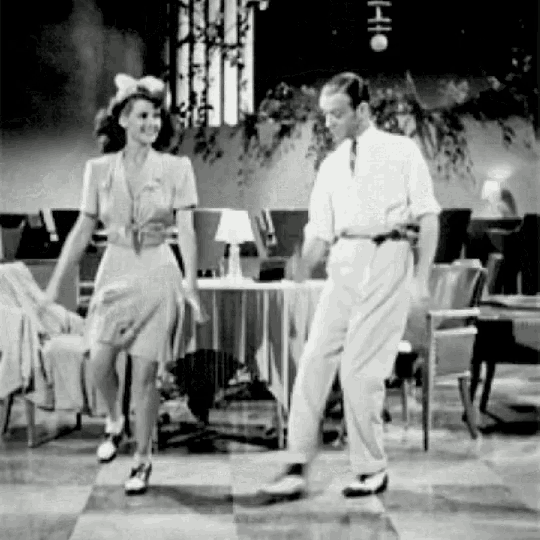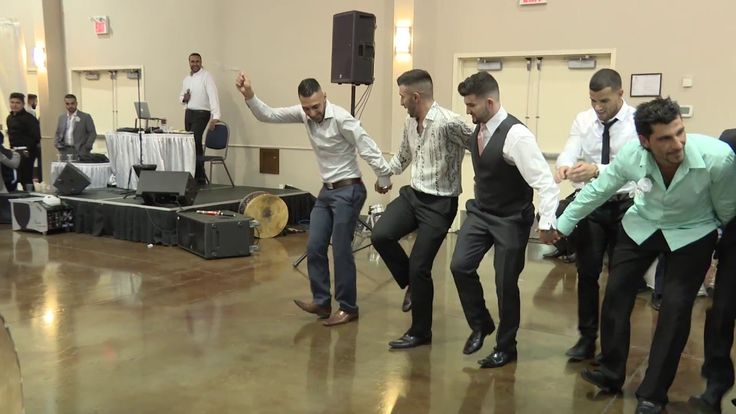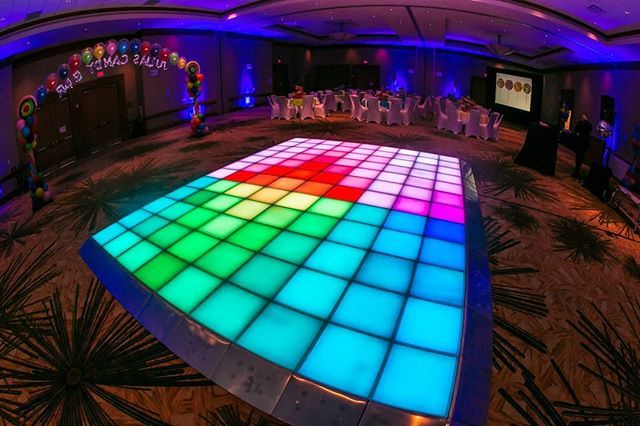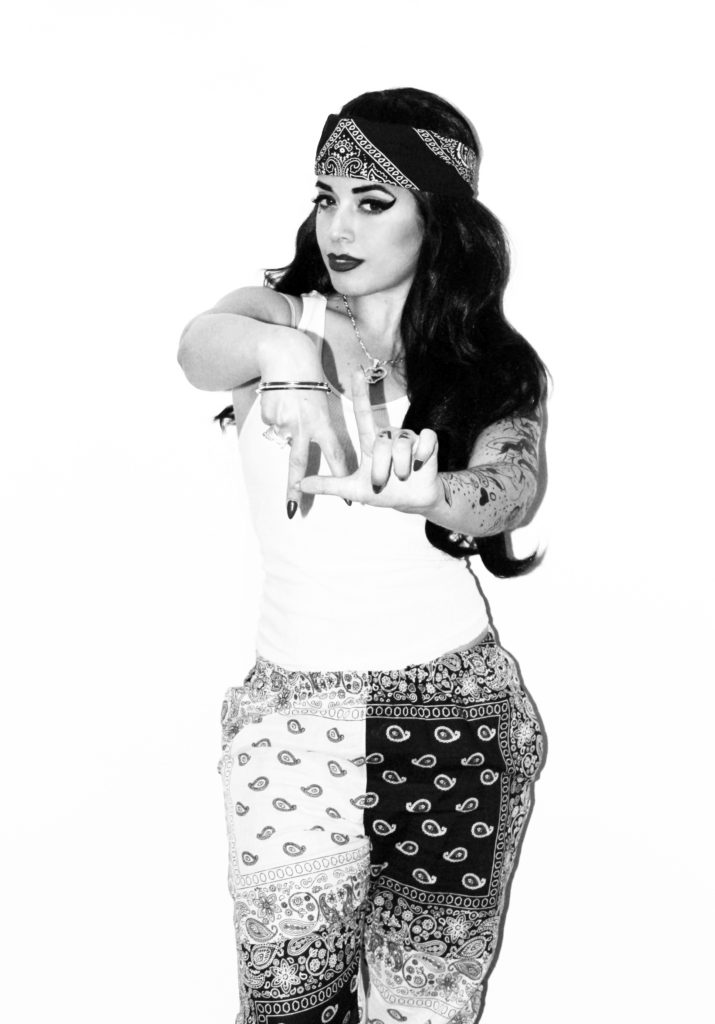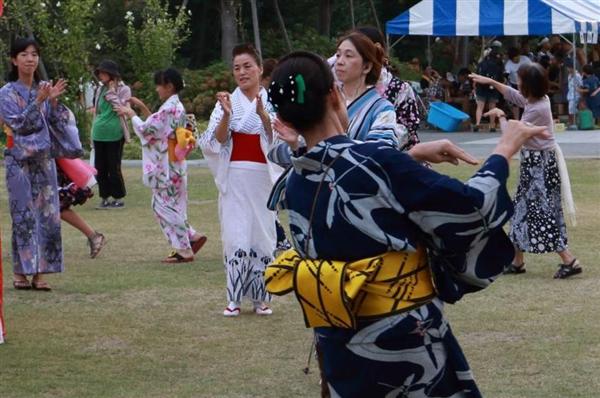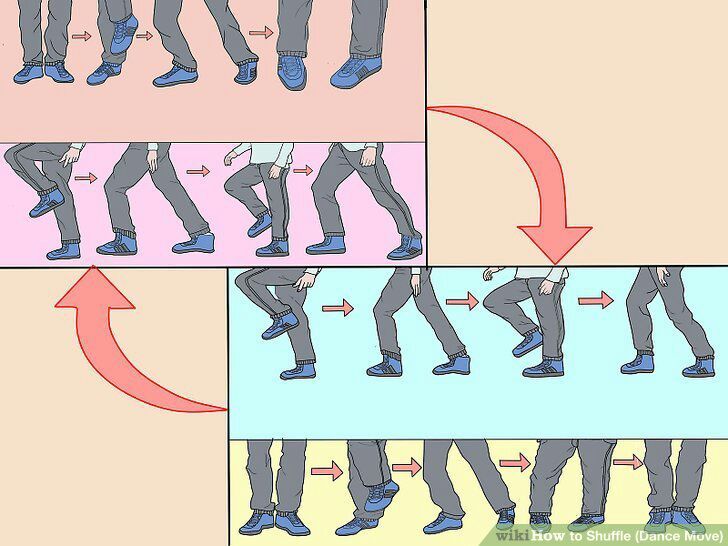How did fred astaire dance on ceiling
“Royal Wedding” and Fred Astaire’s Famous Ceiling Dance | by Geri Danton
I used to tap dance as a kid and still put on my old shoes every once in a while. As such, I have a lot of affection for the musicals of the Golden Age of Hollywood. I recently saw Royal Wedding, the Fred Astaire and Jane Powell musical from 1951 most famous for the iconic scene in which Fred Astaire dances on the ceiling.
The film stars Astaire and Powell as a brother-sister performing team who travel to England for Princess Elizabeth’s wedding. Astaire was 51 when this was filmed to Powell’s 22, but if you can get past that, the two are surprisingly convincing as siblings. Both are committed to the showbiz life and neither is the least bit interested in getting married or settling down, but both just so happen to fall in love on the trip, Astaire with a dancer played by Sarah Churchill, daughter of Winston Churchill himself, and Powell with a British lord. Interestingly, Fred Astaire really did have a career of over 25 years dancing with his real sister, Adele, who left the stage to marry a British lord of her own. Will the two couples get together? I think we know the answer.
That description may not sound too interesting, but these movies are just an excuse to show off the leads’ singing and dancing skills. On this front, we have a great number in which Fred Astaire, annoyed that his sister is late to practice, dances with whatever partners he can make out of items around him.
Later, the two try to do a little performance on the ship to England but run into trouble dealing with turbulence.
And of course we get Fred Astaire’s famous dance on the ceiling.
I have to give Jane Powell, who came late to the production to replace Judy Garland due to her repeated absences, a lot of credit. She didn’t have much dancing experience but trained so hard that she was able to pull off all of her routines and even impress Astaire. Having said that, it’s Astaire who steals the show dancing-wise, as you can see for yourself above.
To accomplish the ceiling dance, a room was built inside of a steel cage inside of a 360 degree track to physically rotate the room while the camera was kept still, creating the illusion.
I said earlier that the story is secondary for these movies, but the famous ceiling dance is given a little bit more emotional resonance from the script. Much earlier in the movie, When Astaire is having his first date with Sarah Churchill’s character, she explains how she got into dancing.
Astaire: Do you like to dance?
Churchill: Yes, Yes. It’s hard work but it’s fun.
Astaire: What made you decide to dance?
Churchill: Oh, a very silly reason
Astaire: How silly?
Churchill: When I was eleven I fell in love with a boy much older.
Astaire: Twelve?
Churchill: No thirteen. His name was Alonzo. And I was so happy that suddenly all I wanted to do was dance. So I figured that if I danced when I was happy, I should be happy if I dance. Is that silly enough?
Astaire: I think so.
Churchill: I felt so good about Alonzo I used to close my eyes and pretend that I could dance all over the floor, walls, even the ceilings.

Astaire: If you ever learn to do that, I could get you a very good booking.
As you can see, Astaire’s dance shows that he remembered what the woman he now loves said and relates to her, showing the connection between them as well as how happy she makes him.
Moreover, at this point in the movie, Churchill’s character is engaged to a man in America, and though she loves Astaire, she’s unwilling to break off the engagement. With his time in England drawing to a close, Astaire’s situation seems to be hopeless. Yet by sheer strength of will, he has done the impossible. If he can dance on the walls and ceiling (albeit presumably in his imagination rather than literally) perhaps he can do the impossible and salvage this romance.
Of course, the two get together in the end. The fiancee in question has already married someone else, leaving Churchill free to pursue Astaire without the 1951 movie-going audience thinking she’s done anything wrong.
The less developed and more interesting (to me) conflict was with Powell’s character.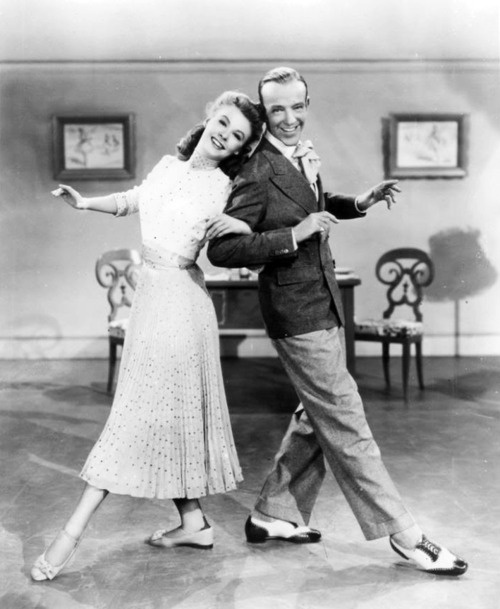 She thinks settling down with her British lord means giving up her career, and Astaire is similarly reluctant to break up the team, even though he floats the idea of finding another partner, perhaps his new love. However, during the titular royal wedding, the two are so moved by emotion that they rush to seek out their paramours for a double wedding on the spot. The film ends there, leaving the question of what will happen to Powell’s career unanswered, although based on what happened to Adele Astaire we can make a guess.
She thinks settling down with her British lord means giving up her career, and Astaire is similarly reluctant to break up the team, even though he floats the idea of finding another partner, perhaps his new love. However, during the titular royal wedding, the two are so moved by emotion that they rush to seek out their paramours for a double wedding on the spot. The film ends there, leaving the question of what will happen to Powell’s career unanswered, although based on what happened to Adele Astaire we can make a guess.
Although the film has much to recommend it, I didn’t enjoy the experience of watching it very much. For every stunning song or dance number like the ones above, there is one that is forgettable. The story drags and the two love interests aren’t very interesting. It’s only 93 minutes, but it felt like much longer. The dialogue quoted above adds resonance to the ceiling dance number, but that resonance is dulled by how much time there is between those scenes full of lifeless material without anything to strengthen the connection between those scenes.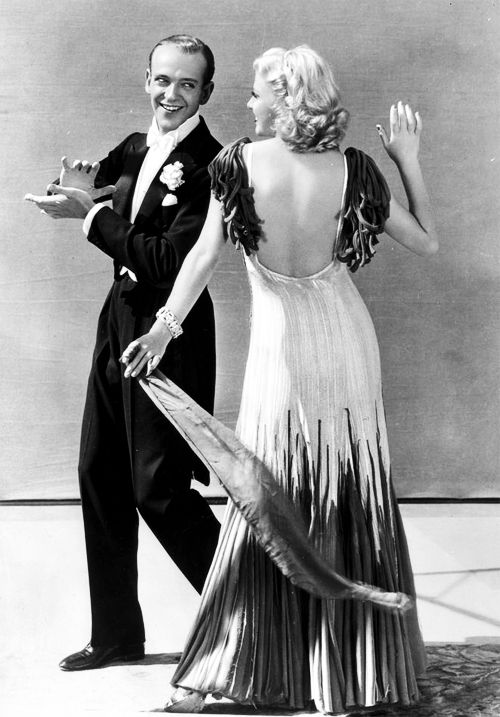
If you’re a fan of classic musicals like this, the movie is worth sitting through for those three numbers alone, as well as a few others. But now you don’t have to sit through a lackluster story to get to the good stuff; all you have to do is find the right clip on YouTube. It’s a shame, too, because as the ceiling dance above shows, no matter how thrilling a musical number is on its own, its proper placement in a larger story can make it have even more of an impact.
Astaire Unwound | Bigfott
I began "Astaire Unwound" as a pet project, and am proud that it came to be included in the "Comédies Musicales" exhibit at the Philharmonie de Paris!
It's no great secret how Fred Astaire was able to literally “dance around the room” in Stanley Donen’s 1951 movie Royal Wedding. The hotel room set was constructed inside a huge rotating steel cage, all the furniture was bolted down, and the camera and cameraman were strapped down and traveled around 360 degrees while Astaire danced away, always remaining upright as the room rotated around him.
But the more you think about it, the more amazing an accomplishment this number seems. The cage must have had a diameter of something like 20 feet, and the light fixtures had to stay powered throughout. The whole thing must have weighed a ton or two. Building this set was an enormous feat of engineering. What would it look like to a bystander as this amazing scene was shot?
To try to answer that question, I took the scene from the movie (left) and performed a little video trickery (right). I did three basic things:
1. Stabilize the footage. I tracked the light fixture in the middle of the back wall, and kept it stationary onscreen while the camera frame moved around it.
2. Recreate the room. I took stills from throughout the sequence, looking for Fred-less fragments of the set that I could piece together to make one "clean" image of the entire room. I also made two image “patches” so that the photo could appear in both the locations Astaire leaves it during the sequence.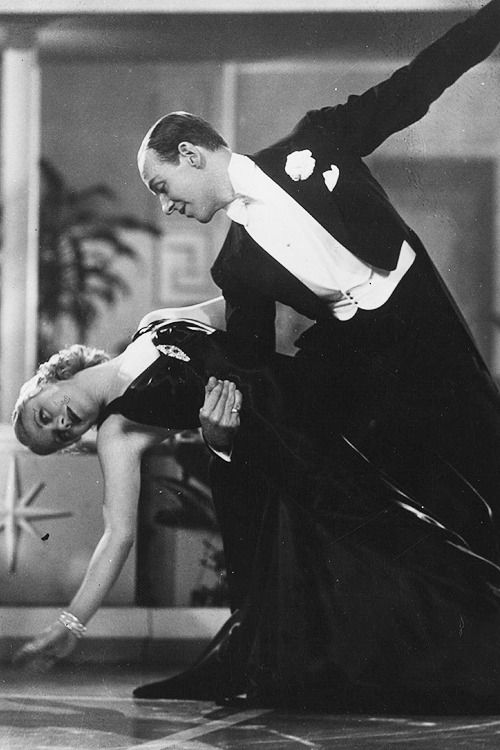
3. Rotate the room. I put the stabilized footage on top of the recreated room, and then tried to figure out exactly when the room was being rotated. Admittedly, there was a bit of guesswork here, but I've got it more or less correct. I tried to err on the side of restraint, only rotating the room when it was inarguably so. It seems to take about 4 seconds for the huge cage to rotate 90 degrees.
In creating this, I of course watched the dance many times, and have a few observations:
0:27 - Astaire twirls the desk chair around here; after the cut at 0:37, this chair would be bolted down so it would rotate with the room. And it must have been attached quite firmly too, since Astaire hangs from it at 1:40.
0:55 - There are several moments like this one where Astaire seems to play with the notion of “defying gravity”. It's certainly possible that the room was rotated counterclockwise just a bit at this point. But from much experimentation with the timing, I think it's more likely that the room moved definitively in increments of 90 degrees only.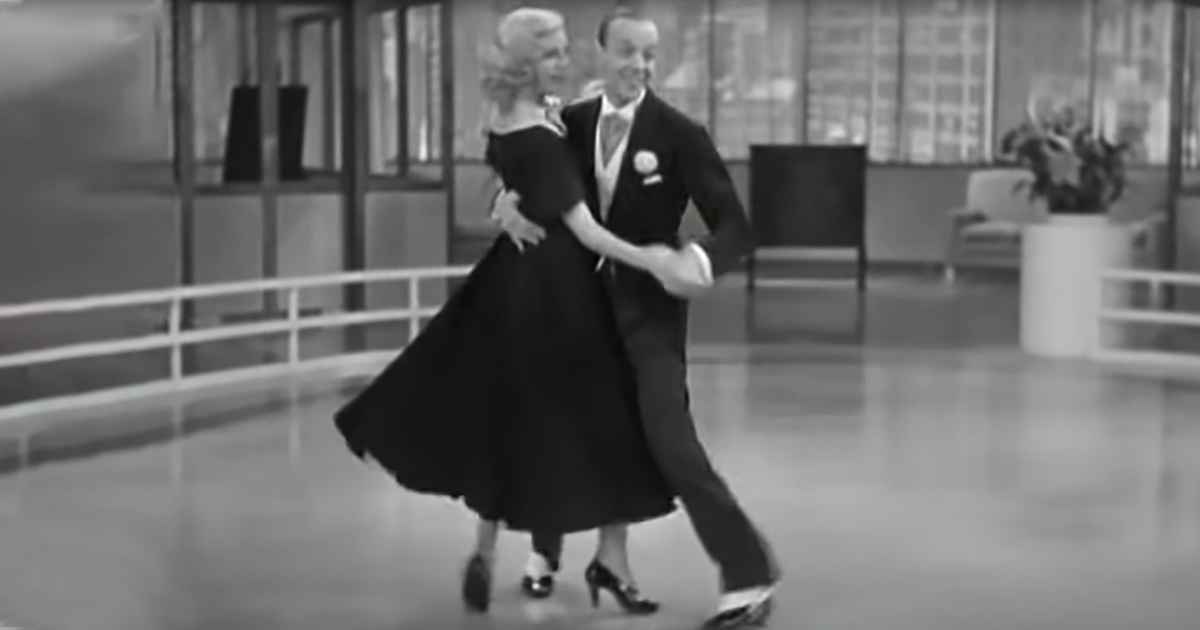 (See note at 2:45 below.)
(See note at 2:45 below.)
1:39 - Notice that when Astaire lands on the "ceiling" after jumping the light fixture, one of the fixture's lights blinks on. Was there an electrical short?
1:42 - With a bit of a tug, Astaire pulls the photo down from the desk. What kept it in place? Magnets, according to Stanley Donen.
1:45 - There's a camera shake (probably due to the set beginning to rotate), and the ceiling light that came on at 1:39 goes back out.
2:17 - There's a fairly obvious cut here to a closer shot. This number feels like one continuous take, but in reality the dance section is pieced together from three different shots. (See 2:45 below.)
2:19 - Astaire now casually places the photo against the right wall, where it will stay in place magnetically while the room is rotated again.
2:45 - Another cut. This is quite a remarkable one, as it passes by virtually unnoticed as one watches the scene.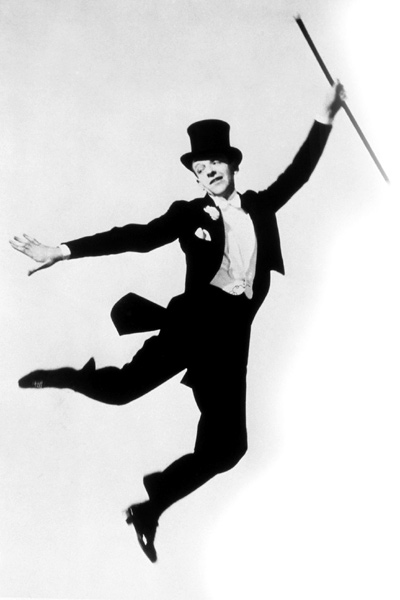 Both Astaire's positioning and the camera framing were extremely close from one take to the next, making the cut almost undetectable. It’s interesting to note though that throughout the number, the room rotates 360 degrees clockwise, then 270 degrees counterclockwise, then 270 degrees back clockwise. Before it switches direction each time, there’s a cut. Was it necessary to somehow “shift gears” on the rotating cage to get it to switch directions, which necessitated these cuts? If so, it's a strong argument against any counterclockwise rotation at 0:55.
Both Astaire's positioning and the camera framing were extremely close from one take to the next, making the cut almost undetectable. It’s interesting to note though that throughout the number, the room rotates 360 degrees clockwise, then 270 degrees counterclockwise, then 270 degrees back clockwise. Before it switches direction each time, there’s a cut. Was it necessary to somehow “shift gears” on the rotating cage to get it to switch directions, which necessitated these cuts? If so, it's a strong argument against any counterclockwise rotation at 0:55.
3:30 - Astaire easily snatches up the photo again to bring the number to a close.
My goal here wasn't to "spoil the secret"; as I say, I think it's fairly well-known how the scene was accomplished, and not too hard to figure out anyway. I just hoped to make it a little easier to visualize what went into the making of this piece of Hollywood history.
While the filming of this number was apparently entirely undocumented, Donen recreated the effect in 1986 as part of Lionel Richie’s “Dancing on the Ceiling” music video. I’ve edited the relevant excerpts from the video’s “making of” documentary and posted it below; this is the best idea we have of what filming Astaire’s number must have been like.
I’ve edited the relevant excerpts from the video’s “making of” documentary and posted it below; this is the best idea we have of what filming Astaire’s number must have been like.
Ginger and Fred: Legends of Hollywood's Golden Age. She collected broken hearts, and he was : vitkvv2017 — LiveJournal
A short, pretty blonde entered the office. Fred gave her an appraising look: okay, nothing special. He could not even imagine that their relationship would continue. In the 30s of the last century, their couple became a legend in Hollywood cinema. When they appeared together in the frame, there was no doubt: they are not just partners on the site. After all, it is impossible to depict love with such fervor and passion.
The girl approached him, wrapping her in a light scent of jasmine, and smiled amiably, flashing an even row of white teeth. Fred was looking for a partner for the filming of the film "Flight to Rio" for the third month. He reviewed several dozen actresses, but none of them liked him.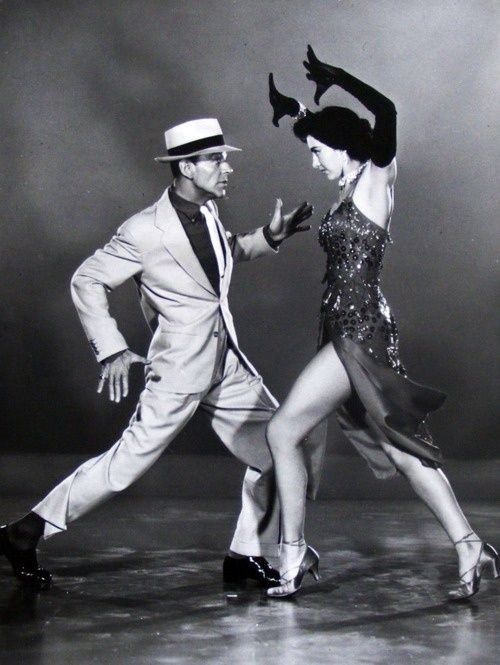 The director gave him carte blanche in regard to the musical design of the picture. Finally, he has a big role, though not the main one, but really significant.
The director gave him carte blanche in regard to the musical design of the picture. Finally, he has a big role, though not the main one, but really significant.
Fred Astaire and his famous ceiling dance
Producer Jack Owen told him: "Fred, I've found the right one! Broadway star, did a great job in several vaudevilles, and what a Charleston dance!"
Fred cursed the studio bosses and the girl imposed on him - Ginger Rogers. He did not like her from the word "at all", especially when she said: "You are considering me as if you were choosing a horse in the market. Can you show your teeth?"
No, he definitely won't act with her. But after Fred was hinted at what threatens to break the contract and disrupt the filming process, he nevertheless reconciled.
Passions raged between Fred and Ginger. They made violent scenes for any reason. Ginger threw thunder and lightning: "This cretin again did not learn the text!" Fred clapped his hands: "She dances vulgarly.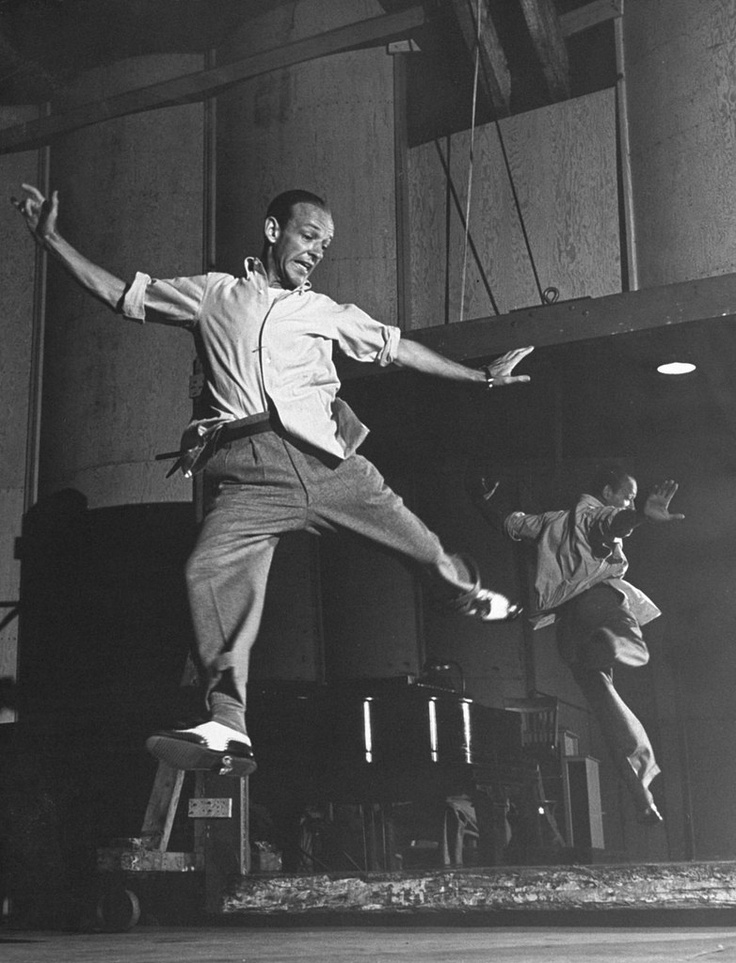 And she doesn't understand anything I'm trying to explain!"
And she doesn't understand anything I'm trying to explain!"
The director clutched his head from their skirmishes. These two cannot stand each other, and on the screen they need to portray love passion. They must play in such a way that the audience believes them.
Fred Astaire and Ginger Rogers
Ginger has been rehearsing "Carioca" for a month now, but nothing comes out. This dance is the culmination of the whole action. Performing it, the characters confess their love to each other. Each of their movements should be filled with passion, delight, desire, adoration. But the main thing is to avoid vulgarity and bad taste. And with a partner like Ginger, this task is almost impossible.
This woman has no idea what good taste is. Dancing, she hangs herself around his neck, wags her hips, cuddles, languidly rolls her eyes ... No matter how much Fred said that it was necessary to play softer, more romantic, Ginger did not want to listen to anything: "I know how a woman expresses love .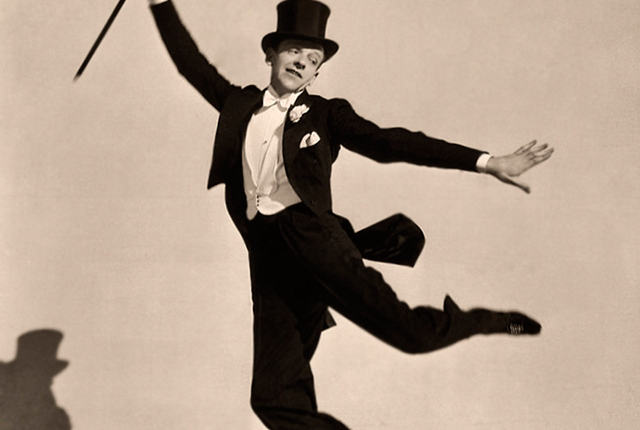 .."
.."
Fred didn't even come to the premiere of "Flight to Rio". To be present at such a shame was beyond his strength. He had no doubt that the film was going to fail. But Astaire's expectations did not come true - the film was a resounding success at the box office. The film brought the studio multi-million dollar profits. The "Carioca" dance, which they performed on the covers of seven white pianos, became the most popular dance on the continent overnight.
Astaire and Rogers' famous move from the movie "Carefree"
Dance studios have opened all over the country, in which teachers taught how to dance "the sexiest dance of all time" just like Astaire and Rogers did.
Watching the film, Fred remembered the words of Audrey Hepburn: "Astaire taught Ginger to understand the language of dance, but it was she who filled this dance with sensual beauty..." Only now did he realize how unfair he had been to his partner. Looking through the cast file in the studio, Fred found an old photograph of Ms. Rogers.
Rogers.
A funny girl with disheveled bangs and surprised eyes was looking at him from the photo. He didn't know Ginger like that. For some reason, Fred hid the photograph in his jacket pocket.
Fred Astaire and Ginger Rogers
One day, when Fred and Ginger were supposed to meet to review the script for a new movie, the girl fell ill. She didn't leave the house for a week. Aster was angry because of the forced idleness. In the end, he took the script and went to her: no matter how bad she felt, thirty pages of text should be mastered?
The door was opened by Ginger's mother - actress Lily Rogers. She smiled kindly and invited Fred to come in. Ginger was dozing on the sofa in the living room. Astaire awkwardly placed the bouquet of roses on the table. The girl woke up and her face lit up with a smile: "Hi! I'm glad to see you!"
Fred immediately forgot that he had come to read the script: "I'm glad too. Really... I didn't think I'd miss you!" She laughed and coughed. Fred looked at her as if seeing her for the first time: without makeup, disheveled, thinner Ginger was so beautiful and defenseless. He took her hand, which lay on top of the blanket. Perspiration broke out on her forehead. He reached into his pocket for a handkerchief and dropped the same photograph he had stolen from the film studio.
Fred looked at her as if seeing her for the first time: without makeup, disheveled, thinner Ginger was so beautiful and defenseless. He took her hand, which lay on top of the blanket. Perspiration broke out on her forehead. He reached into his pocket for a handkerchief and dropped the same photograph he had stolen from the film studio.
Fred Astaire and Ginger Rogers
Rogers' eyebrows went up mockingly: "I didn't know you were collecting my photographs..." Embarrassed, Fred hurried to take his leave.
Mark Sandrich, the director of the film Top Hat, in which Ginger and Fred starred, patted Astaire on the shoulder in a friendly way: "Everyone can see that you and Ginger are crazy about each other! Everyone can see how your face changes when you sing to her" Cheek to cheek"! After listening to you, no one will remain indifferent. You'll see, they'll give you an Oscar for it..." , to which Irving Berlin wrote the music, received the highest award of the American Academy.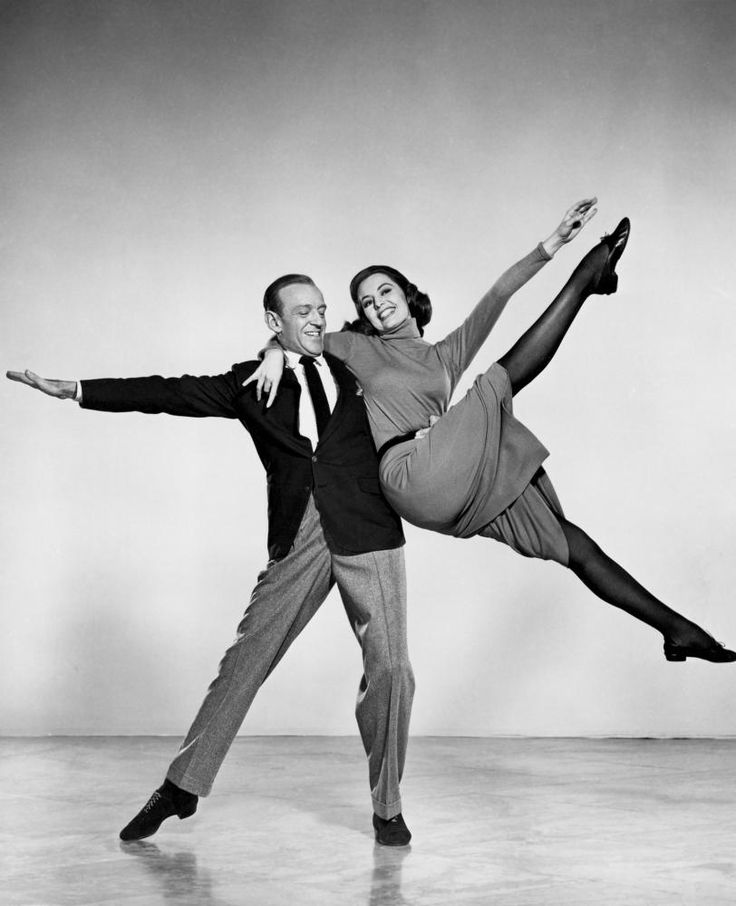
Fred laughed: everyone agreed that they were having an affair with Ginger. Yes, their relationship has recently changed, they have become trusting and more open. Astaire has completely changed his mind about Ginger. Now, behind her defiant manner of dressing, he saw self-doubt and vulnerability. They just like each other, nothing personal!
Fred Astaire and Ginger Rogers
For the filming of "Top Hat" Ginger made a stunning dress - a blue miracle of ostrich feathers, which cost the studio a decent amount. Dressed in it, Rogers appeared on the site in an airy cloud of fluff and feathers. The dress sat incomparably, but the girl was trailed by a train of feathers...
The director threw up his hands: "You look like an open pillow. Another minute and you'll cover the whole pavilion with ostrich feathers!" But Ginger said that she would only be filming in this dress.
...The music began to play. Astaire and Rogers went to the middle of the court to make a spectacular pass at the beginning of the dance. A few steps, twisting - Fred waved his hand lightly and Ginger spun like a top. In the next moment, Fred felt a sting in his eyes, his nose tickled. He was unable to breathe. An allergic reaction has begun. Filming was interrupted. Fred in his trailer drank pills and sipped water.
A few steps, twisting - Fred waved his hand lightly and Ginger spun like a top. In the next moment, Fred felt a sting in his eyes, his nose tickled. He was unable to breathe. An allergic reaction has begun. Filming was interrupted. Fred in his trailer drank pills and sipped water.
Fred Astaire and Ginger Rogers
A disheveled Sandrich appeared at the door: "Fred! I'll make Ginger throw out this dress. Let her act in another one! It was not enough for you to suffer at her whims!"
Astaire, to Mark's great surprise, shook his head: "No, I'm fine. Let her act in it if she wants it. Just tell the costumers to varnish these feathers..."
The next morning, Miss Rogers appeared on site one of the first. Glancing at her dressing table, she saw a small velvet box to which a note was riveted. "Again a gift from some wealthy admirer," she thought, receiving a dozen knick-knacks a day.
Fred Astaire and Ginger Rogers
Ginger opened the box curiously.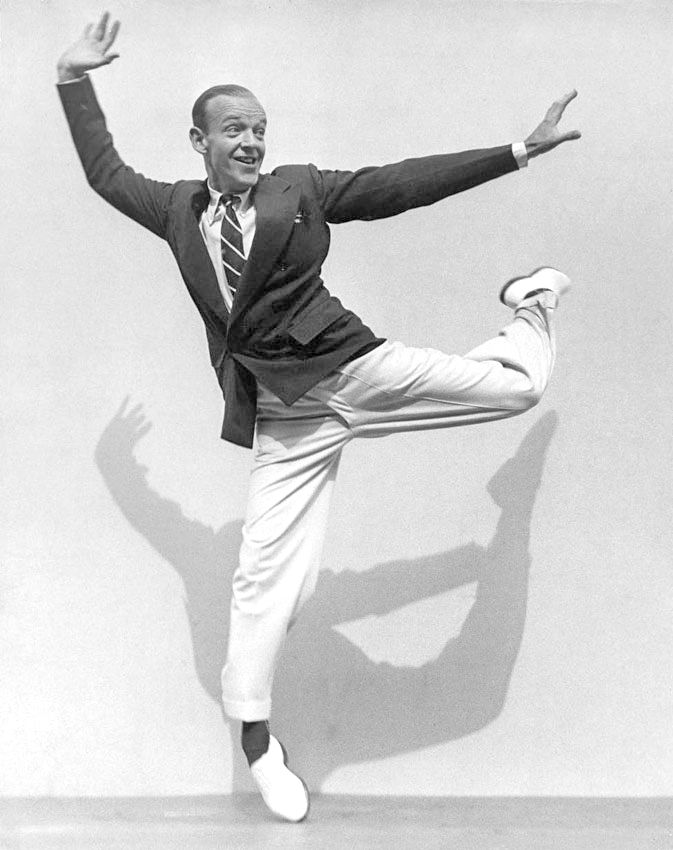 An elegant pendant lay on dark velvet: a golden feather adorned with tiny emeralds, a real masterpiece of jewelry.
An elegant pendant lay on dark velvet: a golden feather adorned with tiny emeralds, a real masterpiece of jewelry.
She put the feather in her palm and smiled dreamily: such a royal gift must have been from some millionaire. Ginger grabbed the note impatiently and froze. In hasty handwriting was written: "Dear feathers! I love you! Fred Astaire."
There was a knock on the dressing room door. Fred appeared in the doorway, his hair slicked back, his splendid pinstriped tweed suit, his shoes polished to a shine. It seemed to radiate from him. Fred glanced at the open box: "Oh, you already got my present..."
Fred Astaire and Ginger Rogers
Ginger suddenly got angry: "Yes, I got it. Take your gift and get out, Fred! You're a married man, and you act like..."
Astaire didn't let her finish. He pulled her to him and kissed her. The kiss lasted an eternity, or maybe just a couple of seconds - Rogers was so confused that she lost track of time . .. Fred said quietly: "You have no idea how long I dreamed about this!"
.. Fred said quietly: "You have no idea how long I dreamed about this!"
Rogers never ceased to amaze Astaire. She was quite satisfied with the position of a secret lover. She did not pretend to take the place of Astaire's wife. Ginger laughed and said that she was too windy to connect her life with one person.
In this she was the opposite of Aster's wife. Phyllis Astaire was an exemplary wife. She and Fred moved to Hollywood in 1933. Fred's career was just beginning, and it happened that they sat for months without money.
Phyllis, taking care of her two men (from her first marriage she had a son, Peter), managed to cook new dishes every day, with only beans, onions and bacon at her disposal. And how she sewed! If Phyllis had been more ambitious, she could have become a great fashion designer.
Fred Astaire and Ginger Rogers
There was a party at the studio and Fred had absolutely nothing to wear. His only suit was already shiny, it was so worn. The wife went to a used clothing store and bought a moth-eaten tailcoat and trousers. In one night, she worked a miracle, turning this rag into a magnificent two-piece suit.
The wife went to a used clothing store and bought a moth-eaten tailcoat and trousers. In one night, she worked a miracle, turning this rag into a magnificent two-piece suit.
Returning from a party where he managed to quietly steal a bottle of Dom Perignon, Fred thanked Phyllis: the suit fit like a glove. He and his wife drank champagne from teacups (there were simply no glasses in the house) and ate puff pastry that Phyllis baked. Astaire said: "I promise you will be proud of me! You will see that you were not mistaken in marrying me!"
Fred Astaire with his wife Phyllis
Phyllis smiled happily: "I always knew about it! I want to raise a glass to the fact that we always remain the closest people to each other and never lie..."
Fred was a great actor . Every time he left home, he could put on a whole performance: "We didn't have time to film the last scenes in the pavilion. We'll have to work all night..." He hurriedly kissed his wife and disappeared.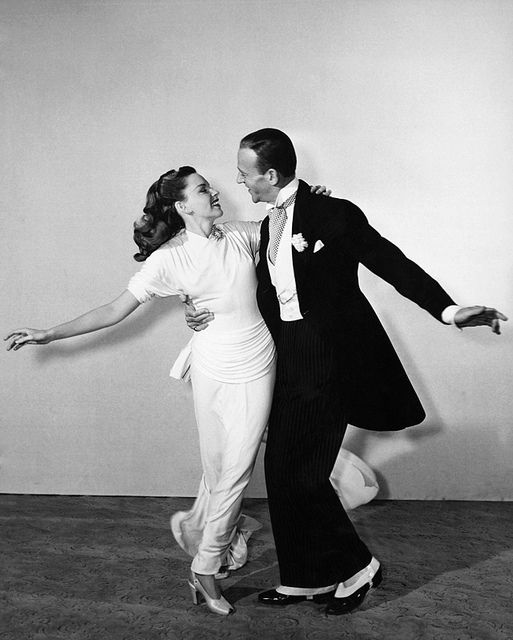
Ginger has been waiting for him for half an hour, but she doesn't like to wait... With Ginger, you always had to keep your finger on the pulse. As soon as Fred disappeared for a while, someone else took his place. He arranged for her a stormy scene of jealousy, and she showed him the door: "You are dear to me and I love you in my own way. But I am a free woman! Either accept me like this or leave!"
Between 1934 and 1939 they acted together in nine films. For five years, they converged and diverged many times, quarreled heavily and reconciled again. But whatever happens, one thing is certain: they were never bored with each other.
One day Ginger announced that she was tired of acting and she was taking a time out. Why did the successful and young actress make such a decision? Maybe she was tired of being Fred's partner only in the movies, and he, who had not been free for a long time, could not offer her anything more.
She had a rest for less than six months and returned to the cinema to play the title role in the film "Kitty Foyle", for which she received an Oscar.
Fred Astaire and Ginger Rogers
And then she left for Tahiti without even saying goodbye. A month later, as if in mockery, Ginger sent Fred a photograph to the studio, where she was beautiful, radiant, in a bright dress, stood with a muscular macho. Fred tore this picture into small pieces.
The only way he could stop his longing for Ginger was work. He disappeared into the studio twenty-four hours a day. In a short time, he starred in several films. True, they had modest success.
These films did not have that enthusiasm, lightness, mood, energy and incredible charm that Ginger brought. But now they were not only in the movies. Without Ginger, his life has become correct, boring and insipid.
In 1946, Fred Astaire announced his retirement from cinema. The national newspapers presented it as a sensation. Fred answered in monosyllables in an interview: he was tired and wanted to devote more time to his family. He has three children: in addition to his adopted son Peter, he and his wife have a son, Fred Jr.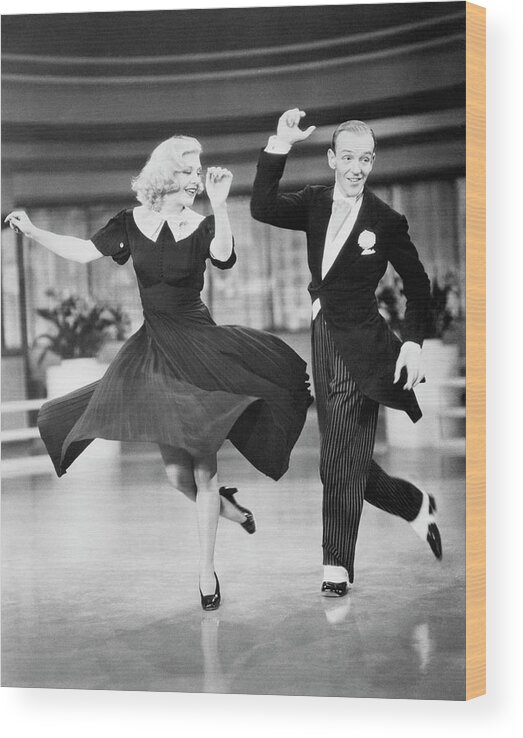 , and a daughter, Ava.
, and a daughter, Ava.
Aster's vacation lasted two years. In 1948, he brilliantly played in the "Easter Parade" with the inimitable Judy Garland. When the movie premiered, the first person Fred called was Ginger. They didn't speak for ages.
Fred Astaire and Ginger Rogers
Fred was worried like a schoolboy: "Hi, it's me..." - "Who am I?" - an unhappy voice was heard in the receiver. There was a pause. Instead of talking about his film, he began to improvise on the go: "I wanted to invite you to star in a new film together. I read the script, the picture will be beautiful ..."
Ginger was suddenly interested: "Let's meet at the restaurant on the corner..." Fred arrived at the restaurant half an hour early, paying attention to all the young fair-haired women on the way. He was completely exhausted from waiting when he finally noticed a woman in a black suit and a hat with a veil coming towards his table. Ginger!
Fred Astaire and Ginger Rogers
She sat down at the table and took off her hat.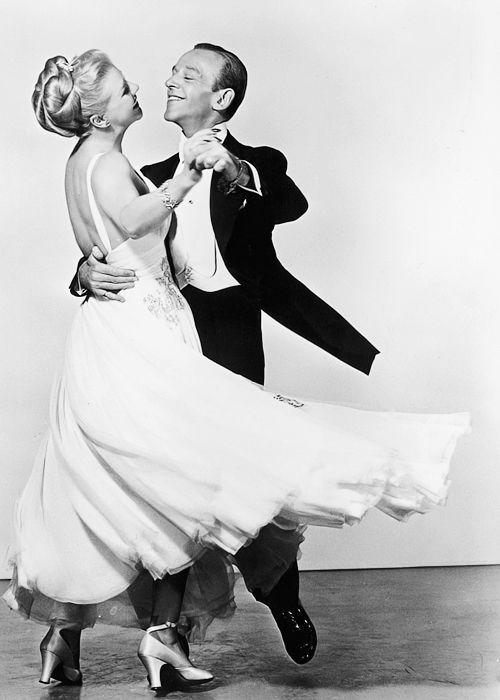 Fred was stunned: an unfamiliar tired woman was sitting in front of him - bags under her eyes, withered skin. This was not the Ginger he had never stopped loving all these years.
Fred was stunned: an unfamiliar tired woman was sitting in front of him - bags under her eyes, withered skin. This was not the Ginger he had never stopped loving all these years.
In 1949, he and Ginger starred in their last movie together, The Barkley Family of Broadway. It became the only color picture with their participation. They met again to part forever.
After World War II, Ginger's career began to decline. She starred in a movie for the last time when she was 54 years old. It was a Harlow painting. Three years earlier, Ginger had divorced William Marshall. She had five marriages in total. For the rest of her life, she lived very secluded on her farm in Oregon, where she died at the age of 83.
Fred lived to be 88 years old. He last danced in the musical "Entertainment" when he was 77 years old. In 1955, he lost Phyllis: she died of short-lived cancer at the age of 46.
Fred Astaire with wife Robin
Fred did not find another life partner until twenty-five years later.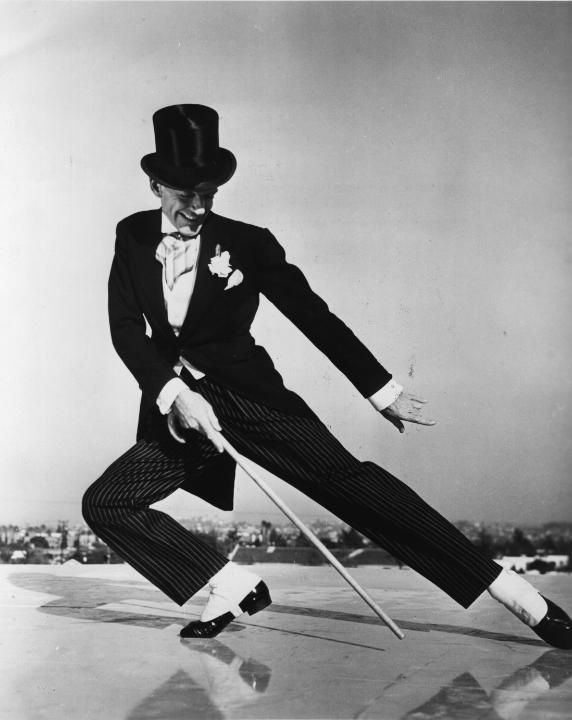 Robin Smith, a jockey from an equestrian club, was half a century his junior. She was with Astaire in the hospital the day he passed away.
Robin Smith, a jockey from an equestrian club, was half a century his junior. She was with Astaire in the hospital the day he passed away.
Legendary Fred Astaire - Look At Me
Fred Astaire American theater and film actor, dancer, choreographer and singer, legendary Hollywood star, one of the greatest masters of the musical genre in cinema, became famous for his grace and impeccable sense of style.
The future king of the tap dance was born on May 10, 1899 in Omaha, Nebraska, in the family of an immigrant from Austria. Fred's father, Frederick Austerlitz, was an Austrian immigrant to the United States and professed Catholicism; his roots were in Austria and Alsace. He came from a family of Austrian brewers and told his children more than once: “There are two types of Austrians: scoundrels and musicians. I belong to the second...”
=========================================== ==========================
Friends, I invite you to watch the film "Cylinder", with the participation of Fred Astaire in the DEJA VU club (Moscow), October 9, at 20.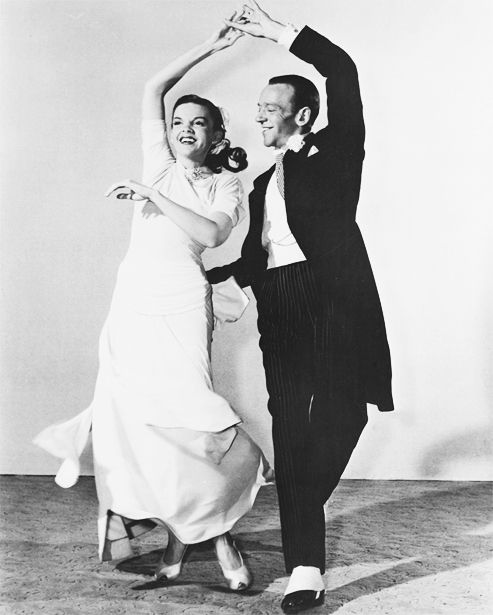 00.
00.
Admission is free.
More details about the event here.
Book your tables here.
============================================== ========================
In 1895, Fred's father moved to America. A year after arriving in the United States, he married a girl ten years his junior, Joanna Helius (she was 17), whose parents were German-speaking Catholics from Alsace. Both Frederick and Joanna loved music and theater. Frederick often demonstrated his talents to his wife by playing the piano. The first child of the Austerlitz couple, daughter Adele was born in 1897 year. And in May 1899, a son was born, named after his father Frederick, the future legend of America. In 1904, the family decided that Joanna and the children would go to New York so they could try their hand at vaudeville on Broadway, while Frederick Sr. would stay in Nebraska to earn money. By a whim of fate, the parents' hopes were pinned on Adele - the move to New York was started precisely because they saw the talent of a dancer in her.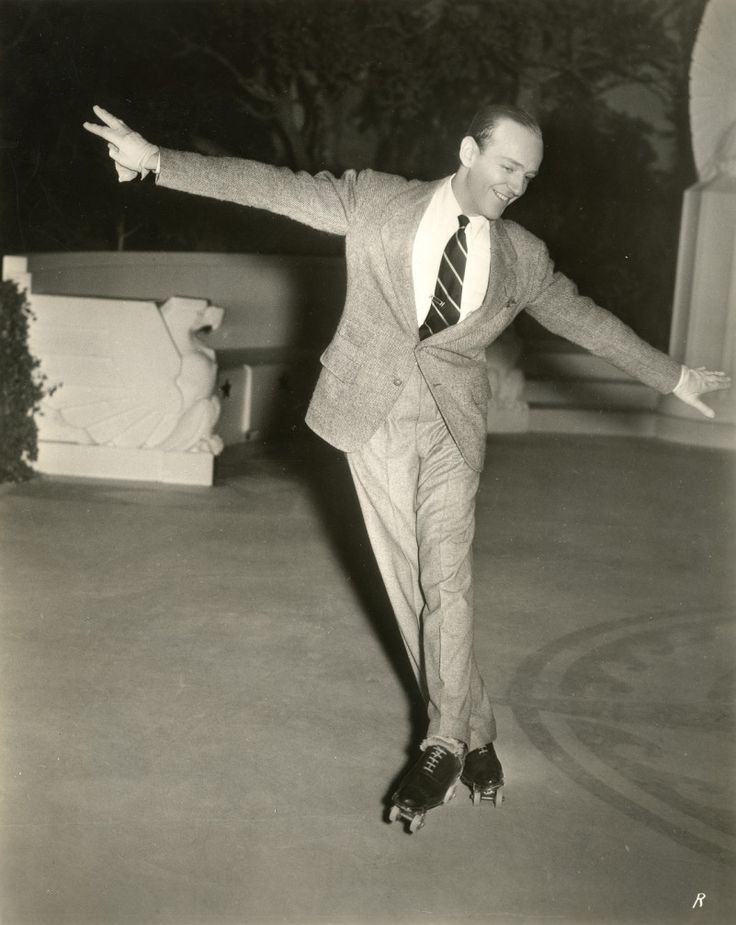
In his autobiography, Fred Astaire recalled: “This trip was like a stab in the back in the dark - we arrived in New York with nothing more than a letter of introduction to someone's aunt. My mother had never been here and did not know anyone - neither in the near-theatrical sphere, nor anywhere. However, luck, in spite of everything, smiled at them and after a trial tour with vaudeville in New Jersey, Frederick Austerlitz was already able to join the family in New York to help achieve even more. Soon he was able to get the children to participate in a big tour. It was then that seven-year-old Fred and nine-year-old Adele drove to Los Angeles - they got "to the threshold of Hollywood." As part of the Orpheum troupe, the little Austerlitz then traveled all over America - from Pennsylvania to California. It was my father's idea to take the stage name "Astaire" at 1905 year. It was decided that the "native" surname evokes associations with the battle and the military, and, after consulting, the surname of an uncle from Alsace-Lorraine, who was allegedly called L'Astaire, was chosen, remade in an American way.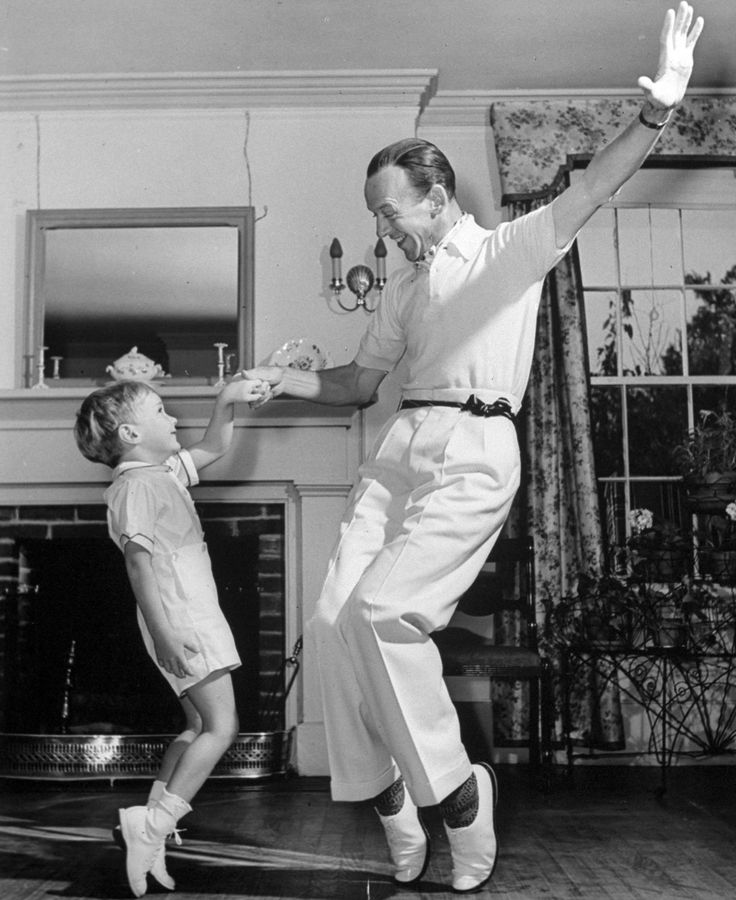
And dancing began for Frederick Austerlitz at the age of 4. Together with their sister Adele, who was a year and a half older than her brother, they entered a dance school in Omaha, in their hometown of Nebraska. By the way, brother and sister did not study a single day in an ordinary comprehensive school. They were clearly not up to it: already at the age of 6, wearing a black tailcoat, Fred danced on the professional stage. “All my life it seemed to me that I was born in a tailcoat,” the actor would write later. This is how he entered the history of dance - light, impetuous, in an elegant black tailcoat, in a snow-white shirt with a "butterfly" and a white carnation on the left lapel.
Their vaudeville performances continued with mixed success and interruptions until they hit Broadway with Over the Tops in 1917. They sang and danced, were good acrobats, played the piano.
Some sources claim that Astaira's brother and sister flashed in the 1915 film "Fanchon, the Cricket" starring Mary Pickford, but this, unfortunately, is unreliable.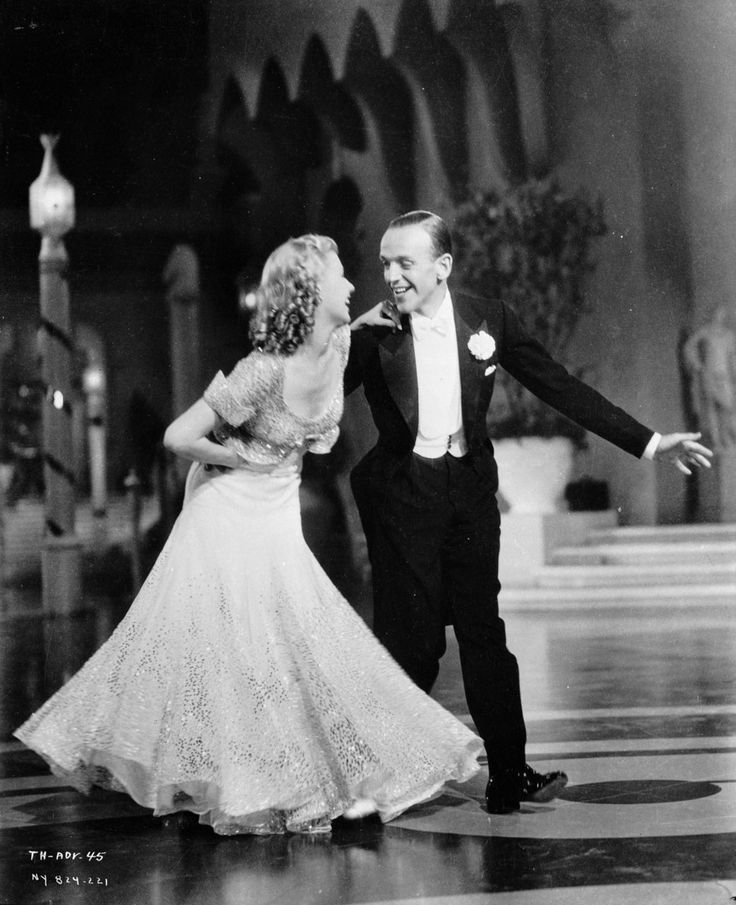
But before the world discovered Astaire's flying dance, there were long years of mastering the profession and painstaking work. Performing on the stages of music halls in New York and London, Adele and Fred learned early not only what success is, but also how to deal with defeat. “We also had failures,” Astaire recalls. - I used to dance to the point of exhaustion, and only liquid pops were distributed as a reward. We had to look for work, several times we were rejected in music halls, and once our performance was replaced by trained dogs. Only faith in the future made us work tirelessly and improve.”
Astaire's diligence was fantastic, he could rehearse for 8 hours a day, training his legs and body, as thoroughly as a ballet dancer. Perhaps that is why the technique and grace of the dancer delighted even ballet stars. George Balanchine called Astaire the most inventive dancer of all time. But it was a little later, but for now Adele and Fred are storming the heights of show business.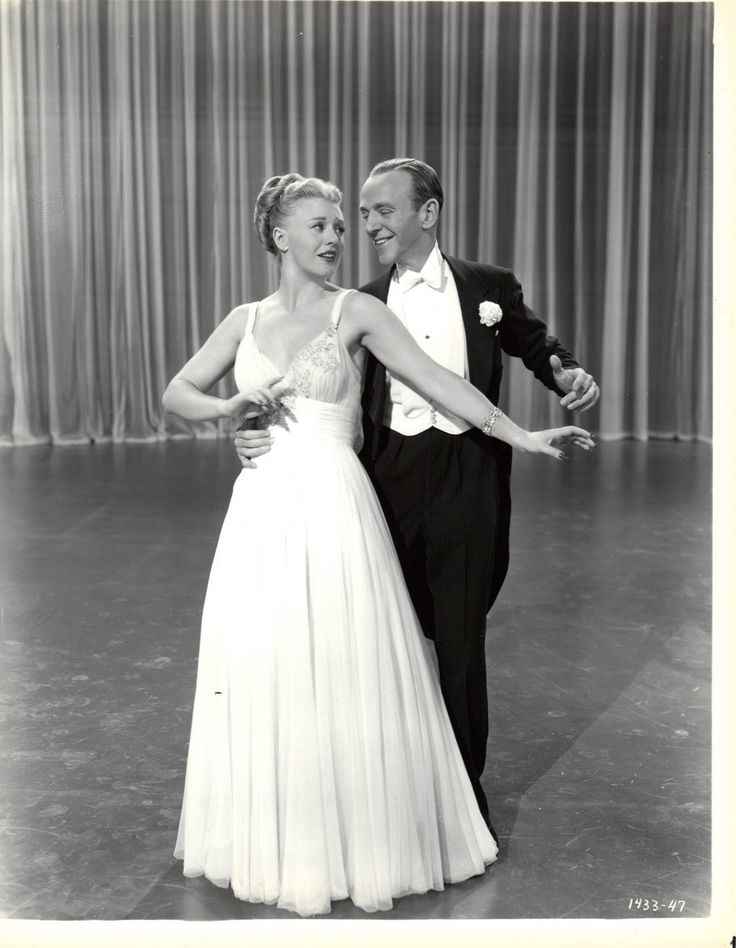
At the age of 16, Fred meets the young composer and pianist George Gershwin, which marked the beginning of a long friendship that influenced the careers of both artists. This friendship will give him two Gershwin musicals - “Lady, please” and “Funny Face”, in which Adele and Fred triumphantly perform in London in the mid-20s, receiving public recognition on both sides of the Atlantic. By the way, in the late 50s, Astaire once again successfully played in "Funny Face", but not theatrical, but cinematic, where his partner will be the amazing Audrey Hepburn.
All the years that Adele and Fred performed together, and this is a little more than a quarter of a century, the main role always belonged to Adele, the sister overshadowed her brother with her hot temperament. Adele was rightfully considered an outstanding star; her dancing, her singing made an unforgettable impression on everyone and, quite definitely, that Fred was in the shadow of his lovely sister. Obviously, this is what influenced his manner and style of dance and behavior. With inner composure and concentration, he was outwardly relaxed and carefree, and with such seeming carelessness, he nevertheless achieved magical perfection in his dances. But then Fred was only a background, played a secondary role, and, as the newspapers of that time wrote, he was more Pierrot than Harlequin.
With inner composure and concentration, he was outwardly relaxed and carefree, and with such seeming carelessness, he nevertheless achieved magical perfection in his dances. But then Fred was only a background, played a secondary role, and, as the newspapers of that time wrote, he was more Pierrot than Harlequin.
Their shows have been marked by numerous royal visits. And once, after an evening performance, Fred and Adele even received an invitation from Edward, Prince of Wales, to dine together. Prince George became a close friend of the Astaires, and Adele even taught Edward how to tap. In London, in 1924, during the Stop Flirting tour, Fred learns about his father's illness and death.
But when Adele married in 1932 her first husband Lord Charles Cavendish, the second son of the Duke of Devonshire, and left show business, their duet broke up, the brother, forced to once again look for a place in the sun, gained worldwide popularity.
Fred continued his career on Broadway and London with Divorce Merry.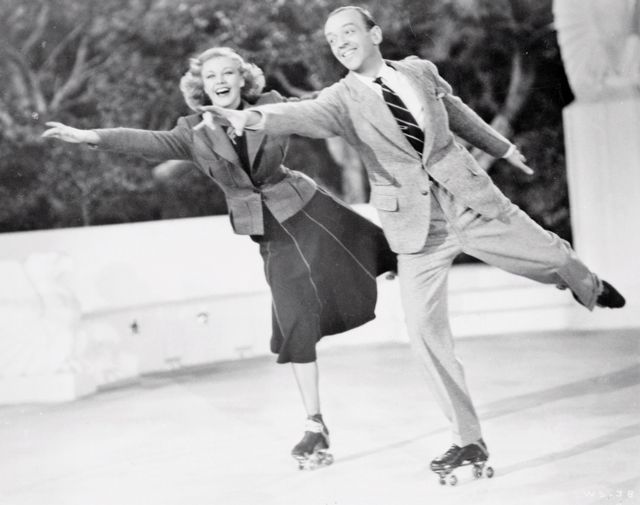 Fred is briefly left alone on stage. But not in life. He falls in love with 25-year-old Phyllis Potter (née Phyllis Livingston Baker, 1908-1954, they met at a golf lunch at the Vanderbild house) - the daughter of the famous New York doctor Baker. And he throws all his strength and all his charm to win the heart and hand of Phyllis - even turning down a tempting offer to participate in the production of a new musical on Broadway - just to be near her (at that moment in London). At 1933, the day after Phyllis' divorce decree, they get married and Fred decides to start a film career.
Fred is briefly left alone on stage. But not in life. He falls in love with 25-year-old Phyllis Potter (née Phyllis Livingston Baker, 1908-1954, they met at a golf lunch at the Vanderbild house) - the daughter of the famous New York doctor Baker. And he throws all his strength and all his charm to win the heart and hand of Phyllis - even turning down a tempting offer to participate in the production of a new musical on Broadway - just to be near her (at that moment in London). At 1933, the day after Phyllis' divorce decree, they get married and Fred decides to start a film career.
According to Hollywood folklore, the account of Astaire's first screen test at Warner Bros., now lost, like the screen test itself, supposedly read: "Can't sing. Doesn't know how to play. Lysina. Dancing a little." In a few years, the owner of the studio, Jack Warner, will bitterly regret this and will offer Astaire any money for filming on Warner.
However, after the refusal of Warner Bros., Fred did not remain without work.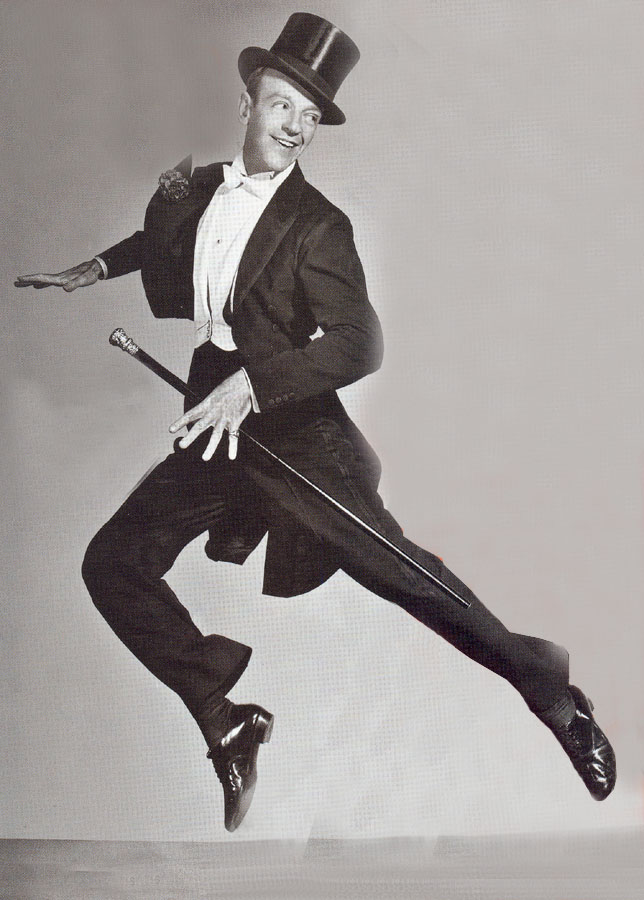 Another Hollywood studio, RKO, showed interest in him. The producer of the films featuring Astaire and Rogers claimed that he had never heard of such a report in the 1930s and that it appeared many years later. Astaire himself in an interview with the American Broadcasting Company (ABC) given to him at 1980, to journalist Barbara Wolters, said that in fact the report said: “He can’t play. Bald patches. She also dances." Be that as it may, the screen tests were clearly unsuccessful, but in 1933 he made his film debut in the successful film Dancing Lady, where he played himself and danced with Joan Crawford. His film debut did not bring success, but Astaire clearly understood that it was in the cinema that he could achieve the highest results. Cinema, a world different from theater, gave him not only a huge audience, magnificent technical achievements, but also complete dance freedom. And he leaves the stage forever. Now in his life only cinema and a new partner - Ginger Rogers.
Another Hollywood studio, RKO, showed interest in him. The producer of the films featuring Astaire and Rogers claimed that he had never heard of such a report in the 1930s and that it appeared many years later. Astaire himself in an interview with the American Broadcasting Company (ABC) given to him at 1980, to journalist Barbara Wolters, said that in fact the report said: “He can’t play. Bald patches. She also dances." Be that as it may, the screen tests were clearly unsuccessful, but in 1933 he made his film debut in the successful film Dancing Lady, where he played himself and danced with Joan Crawford. His film debut did not bring success, but Astaire clearly understood that it was in the cinema that he could achieve the highest results. Cinema, a world different from theater, gave him not only a huge audience, magnificent technical achievements, but also complete dance freedom. And he leaves the stage forever. Now in his life only cinema and a new partner - Ginger Rogers.
And it seems that it was a long time ago: the golden age of Hollywood, the excitement and fun of black and white musical films, the delightful duet of Fred Astaire and Ginger Rogers.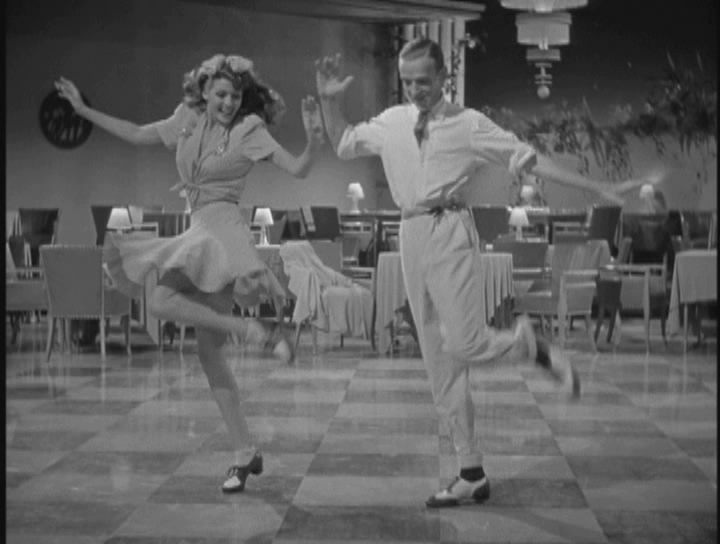 In fact, everything is so close. And Frederico Fellini in the 80s, in memory of the famous duet, made a touching film - "Ginger and Fred", starring Juliet Mazina and Marcello Mastroianni.
In fact, everything is so close. And Frederico Fellini in the 80s, in memory of the famous duet, made a touching film - "Ginger and Fred", starring Juliet Mazina and Marcello Mastroianni.
Astaire's appearance and mannerisms at first seemed ill-suited for cinema.
Recognition came after the movie "Flight to Rio" (1934), where Fred Astaire and Ginger Rogers, his co-star, first met and became the most popular dance couple on the silver screen. The idea to create a permanent acting duo Astaire-Rogers came to the head of producer Lou Brook. He saw in them a wonderful comedy couple, who also knew how to dance and sing wonderfully. Their first joint film "Flight to Rio", where they famously performed carioca, instantly attracted the attention of the audience to them. An unknown couple overshadowed the performers of the main roles of "Flight".
The second film, A Merry Divorce, became one of the highest-grossing films of 1934. The "Cylinder" and "Roberta" that followed him broke the box office records of 1935.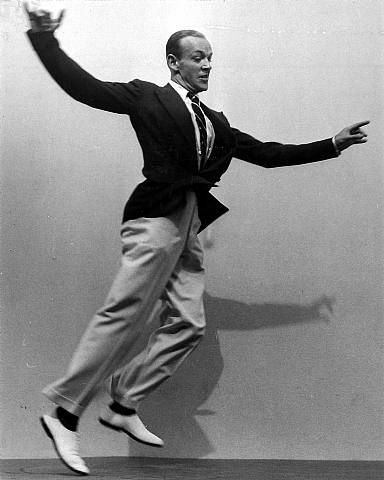 The following year, they are ranked third in the top ten most popular Hollywood stars.
The following year, they are ranked third in the top ten most popular Hollywood stars.
It is absolutely meaningless to retell the content of films with their participation. They were all based on the same template. Fred meets Ginger and falls in love with her. She resists, but Fred eventually wins her over. However, the main thing here is not the plot, but brilliant dances, excellent acting and, of course, songs. At 30, Fred Astaire and Ginger Rogers became Hollywood superstars.
They starred in ten “hit” musicals, including “swing time” (1936), “Following the Fleet” (1936), as well as in the only color film (and the latter with the participation of this couple) - “ The Barkley Couple from Broadway (1949). These films feature songs by Irving Berlin, George and Ira Gershwin and Col Porter.
The appearance of Astaire in Hollywood created a sensation, but at first not artistic, but technical. In those years, when shooting musical films, cameramen liked to indulge in various special effects.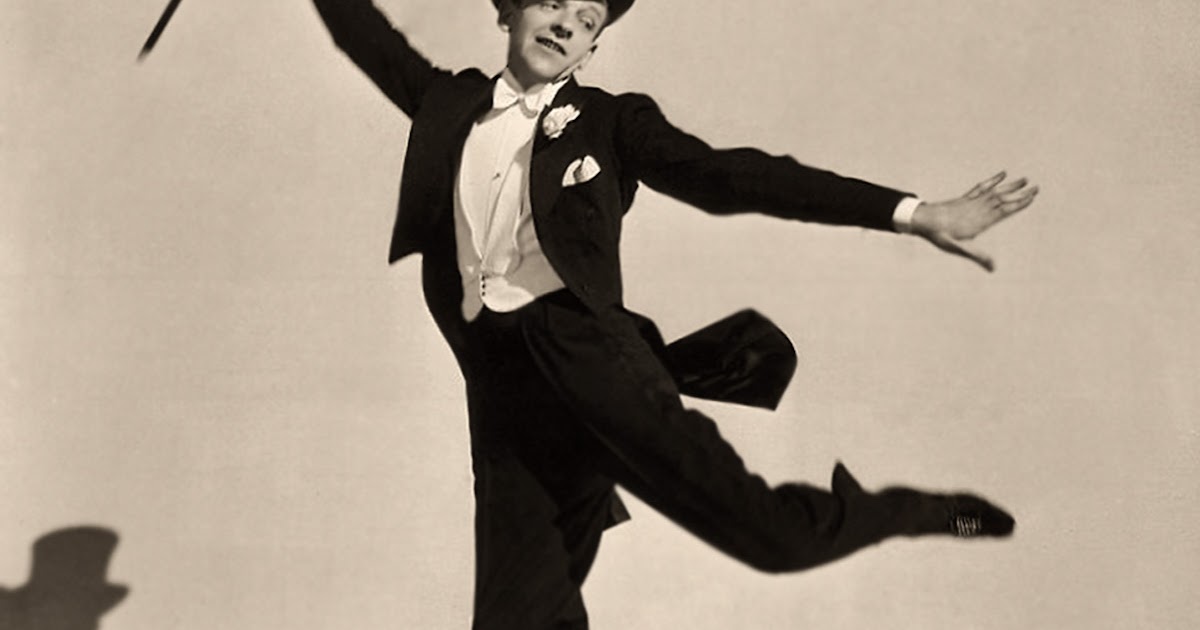 Influxes, sophisticated angles, double exposure, accelerated pace. At first, legs could appear on the screen, then they were suddenly “interrupted” by a smiling face, then interior details crawled in ... Therefore, Fred reserves the right to interfere in all stages of film production with his participation, up to dubbing and editing. During the filming of the first film, Astaire and his choreographer Hermis Pen insisted that the figure of the dancer be uninterrupted throughout the dance and be shown in full growth.
Influxes, sophisticated angles, double exposure, accelerated pace. At first, legs could appear on the screen, then they were suddenly “interrupted” by a smiling face, then interior details crawled in ... Therefore, Fred reserves the right to interfere in all stages of film production with his participation, up to dubbing and editing. During the filming of the first film, Astaire and his choreographer Hermis Pen insisted that the figure of the dancer be uninterrupted throughout the dance and be shown in full growth.
Today it seems strange, but then the effect was deafening. At the viewing after the very first dance number, the audience burst into applause, since nothing like this had ever happened before. Astaire attached great importance not only to how the dance looks, but also how it sounds. The sound that the artist taps out was recorded separately from the dance itself, when the film had already been shot and edited. In a special studio, wearing headphones, the wires of which descended from the ceiling and interfered with movement, the artists again danced their numbers. It was tedious and boring, so some stars asked their choreographers to do boring work for them. And only Astaire never refused dubbing, everything was important to him, even how the floor covering sounds. Even in the "sexual" issue, he was an innovator. Astaire experimented with different types of wood to achieve the sound he needed. Once, in order to achieve a special, muffled sound, he asked to pour water under the wooden paneling. But, of course, the main thing for Astaire was the dance itself.
It was tedious and boring, so some stars asked their choreographers to do boring work for them. And only Astaire never refused dubbing, everything was important to him, even how the floor covering sounds. Even in the "sexual" issue, he was an innovator. Astaire experimented with different types of wood to achieve the sound he needed. Once, in order to achieve a special, muffled sound, he asked to pour water under the wooden paneling. But, of course, the main thing for Astaire was the dance itself.
Dance, which today affects humor, excitement and ease of performance. Astaire, forgetting about gravity, hovered above the ground. His arms flutter like the wings of a bird, and his legs weave intricate choreographic patterns. There is everything here: jumping, spinning on the floor and in the air, various elements of classical dance. Astaire either spins to the rhythm of the waltz, passionately hugging her partner, then envelops her with flowing water, then hotly tap dances with her clockwork legs.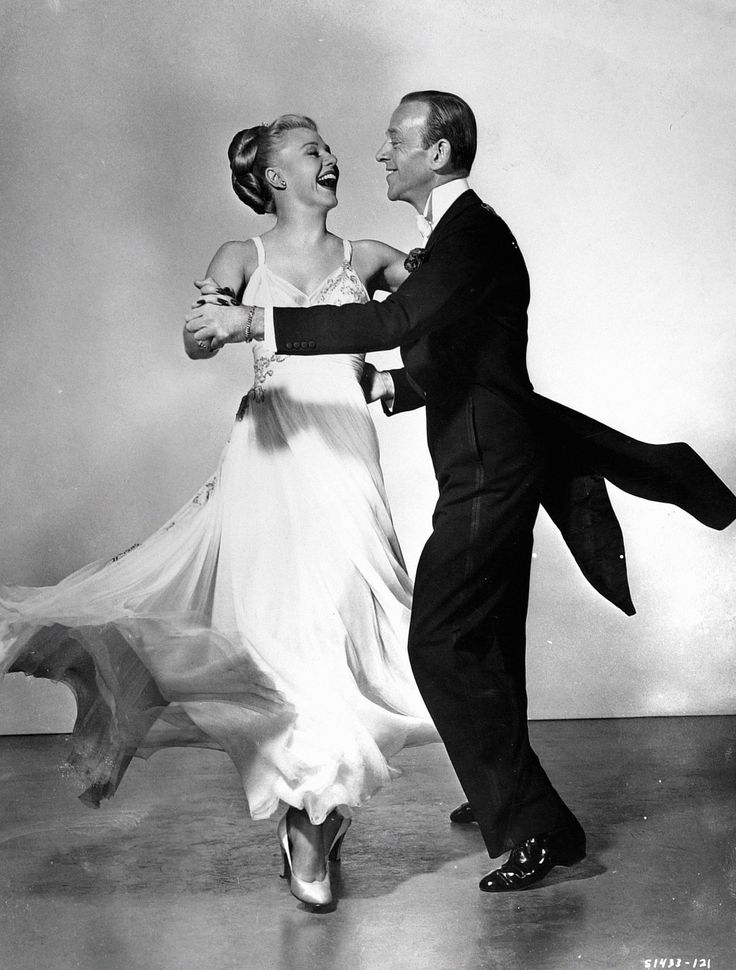
He introduces various objects into his dance: a cane, a boater, a top hat, a hanger. And in his hands they come to life...
Standing on the lid of the piano, the artist runs his foot across the keyboard and the piano starts to sound, Astaire "plays" with a whole set of percussion instruments, he dances between them, extracting sounds with kicks. And if there is a chair in his way, then the chair begins to live in the rhythm of Fred's dance. And the artist does all this easily, as if improvising. Moreover, Astaire never experienced satisfaction from his dance. He could repeat the same movement for days, until he got it the way he planned.
In addition to dancing, Astaire also sang. His not loud, gentle, rustling voice gave his appearance and dances a special masculine charm. Moreover, in the appearance of Astaire there was nothing from Superman. He does not have a very handsome face with large, wide-set eyes, is not very tall and has rather short legs. Nothing from the usual appearance of the Hollywood "star". Astaire himself was humorous about his appearance and vocal abilities. Once he told reporters: “Just look at me. Skin and bones. The face is angular. Cheekbones stick out. Voices - not a penny. In a word, an ordinary performer who only knows how to tap dance. But this mediocre performer conquered the whole world. By the way, not a single film work of Fred Astaire was awarded the prize of the American Film Academy (contemporaries, as you know, are blind and unfair). Only at 1949 he received an Oscar for his contribution to the development of the art of the musical.
Astaire himself was humorous about his appearance and vocal abilities. Once he told reporters: “Just look at me. Skin and bones. The face is angular. Cheekbones stick out. Voices - not a penny. In a word, an ordinary performer who only knows how to tap dance. But this mediocre performer conquered the whole world. By the way, not a single film work of Fred Astaire was awarded the prize of the American Film Academy (contemporaries, as you know, are blind and unfair). Only at 1949 he received an Oscar for his contribution to the development of the art of the musical.
Fred Astaire had a perfect sense of rhythm and ear, he lived by dancing, and cinematic tricks only adorned his talent.
Astaire won world fame during his lifetime thanks to his huge contribution to the genre of the musical, but he always remained modest and intelligent.
Astaire has danced with almost all the "First Ladies" of Hollywood - Rita Hayworth, Cyd Charisse, Leslie Curon "Daddy Long Legs" (1955), Ann Miller and Judy Garland "Easter Parade" (1948).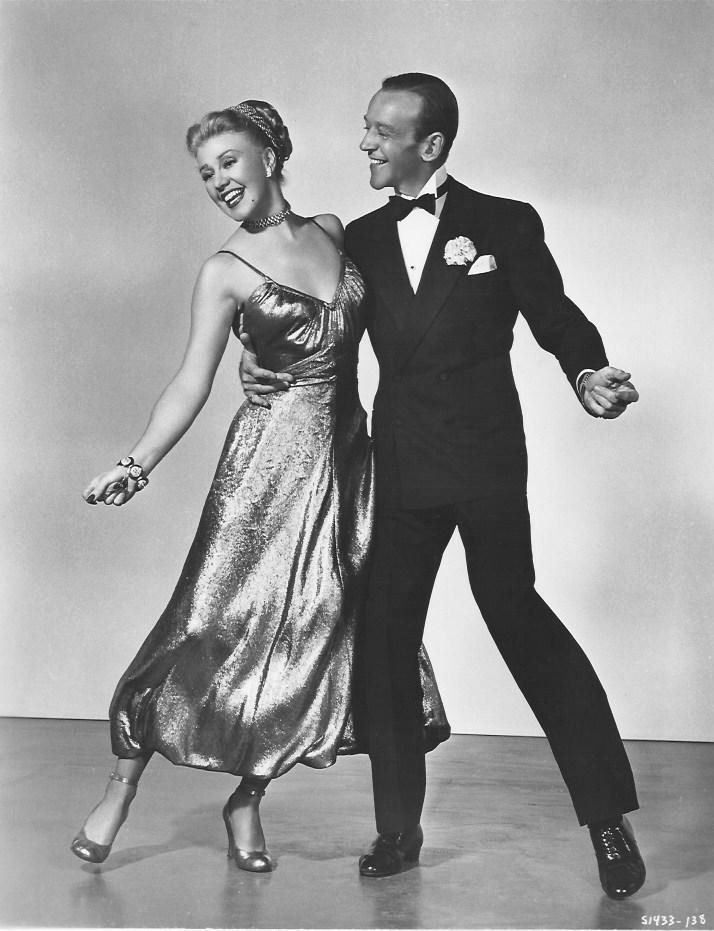 Astaire was keenly aware of the specifics of cinema, which allowed him to accurately and effectively line up his numbers in front of the camera. Astaire was also revered as an outstanding singer, second only to Bing Crosby (they starred together in the film The Holiday Inn (1942). (By the way, during World War II, Fred Astaire toured Europe, speaking to wounded soldiers in hospitals). Fred Astaire was not very strong voice, but his charm, sense of rhythm and rich stage experience made him a real actor and singer.In addition, he could easily sing and dance at the same time, which is not possible for everyone.0003
Astaire was keenly aware of the specifics of cinema, which allowed him to accurately and effectively line up his numbers in front of the camera. Astaire was also revered as an outstanding singer, second only to Bing Crosby (they starred together in the film The Holiday Inn (1942). (By the way, during World War II, Fred Astaire toured Europe, speaking to wounded soldiers in hospitals). Fred Astaire was not very strong voice, but his charm, sense of rhythm and rich stage experience made him a real actor and singer.In addition, he could easily sing and dance at the same time, which is not possible for everyone.0003
However, according to many movie fans, his best partner was ... a hanger in the film "Royal Wedding". This stunning scene has become a classic of world cinema. The hero of Astaire is alone in the rehearsal room. He wants to dance, but... there is no partner. Then he hugs a wooden hanger and spins with it in an amazing dance. He, like a magician, had the gift to revive inanimate objects.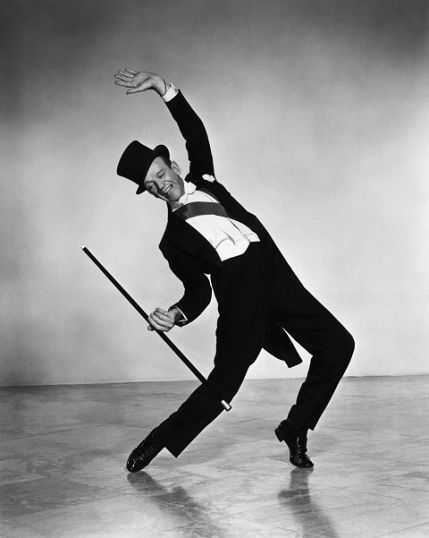 In the same film musical, he performed an amazing number. Easily circling the room in a dance, Fred deftly moves to the wall, and then to the ceiling, continuing to perform his dance, creating a visual effect of complete weightlessness. This, of course, is a montage, but the viewer is not surprised, because this is Fred Astaire. He can do everything!
In the same film musical, he performed an amazing number. Easily circling the room in a dance, Fred deftly moves to the wall, and then to the ceiling, continuing to perform his dance, creating a visual effect of complete weightlessness. This, of course, is a montage, but the viewer is not surprised, because this is Fred Astaire. He can do everything!
Astaire skillfully combined the most diverse forms of dance - step, classical, jazz and ballroom.
His theatrical and film career spanned 76 years, during which Astaire appeared in 31 musical films. His name is often mentioned alongside Ginger Rogers, with whom he starred in 10 films that revolutionized the musical comedy genre. The virtuoso dancer Fred Astaire won fame in a completely different genre - in the musical comedy. Together with actress Ginger Rogers, they formed an unusually harmonious duet, which gave rise to many imitations. Fred Astaire and Ginger Rogers starred together since 1933 to 1939, and all the paintings with their participation were a resounding success.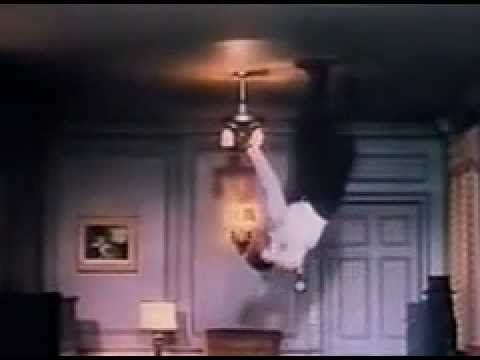 Their duet is recognized as the most popular in the history of cinema.
Their duet is recognized as the most popular in the history of cinema.
They seemed to be made for each other. Katharine Hepburn said of them: "She adds seductiveness to him, he adds class to her." Many viewers sincerely believed that they were husband and wife. Although in reality everything was not as easy as it seemed on the screen. Ginger and Fred often didn't get along as they were very different people.
Astaire was married and considered America's most exemplary husband. Marrying Phyllis Potter, he adopted her three-year-old son, and then she bore him two more children. When, already in the 60s, Astaire lost his wife, who died of cancer, it became a severe shock for him. Ginger, on the other hand, was light-hearted. Famous actors, directors and producers of Hollywood visited her husbands and lovers. It seemed to Astaire that his partner was not as selfless as he would have liked. And Ginger was jealous of the glory of Astaire and suffered, believing that the talent of a dramatic actress was dying in her.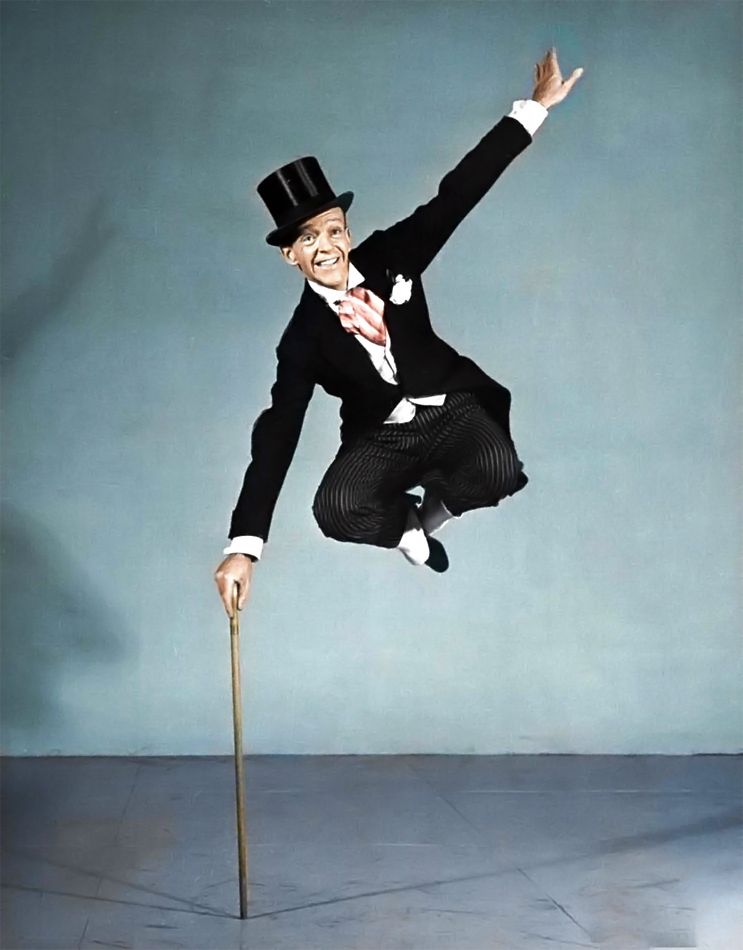 Ginger wanted to prove to herself, to Fred, to everyone that she was not only Fred Astaire's partner, but a real actress. And what is most surprising, she proved it.
Ginger wanted to prove to herself, to Fred, to everyone that she was not only Fred Astaire's partner, but a real actress. And what is most surprising, she proved it.
After Ginger, Fred will never have a regular partner again. But his fame as the most desirable movie man will not fade from this. Fred did not take Ginger's departure as painfully as parting with Adele. By this time he was already a superstar. And he could choose any partner. The first ladies of American cinema - Rita Hayworth, Judy Garland, Syd Charisse, Leslie Caron - will be spinning in his arms...
Audrey Hepburn took only two hours to agree to play in the film "Funny Face". “I knew that I didn’t sing well and I didn’t dance well, but the opportunity to play with Fred Astaire left no room for doubt,” recalls Audrey. Despite the fact that Astaire was already 57 at the time and was 30 years older than Audrey, this did not prevent their dance union and the resounding success of the film. Much later, Audrey spoke about their first meeting at one of the rehearsals: “Fred was wearing a yellow shirt, gray flannel trousers, a red scarf tied around the waist instead of a belt; his famous feet were shod in soft moccasins and pink socks, and his face was illuminated by an irresistible smile.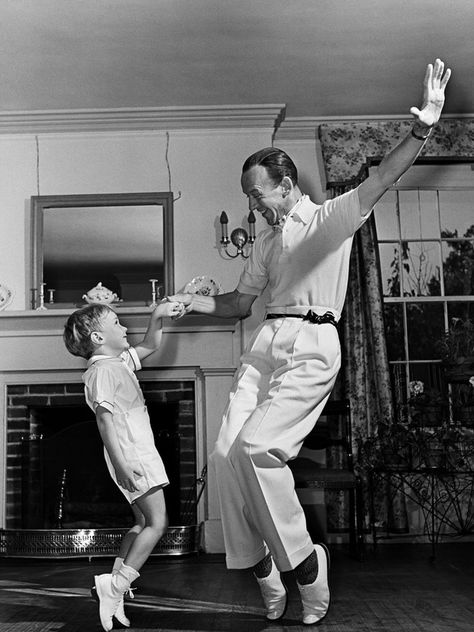 One look at this cheerful, elegant, extraordinary person was enough to make my arms and legs fill with lead, and my soul went to my heels. But suddenly I felt Fred, with inimitable grace and ease, wrap his arm around my waist and literally lift me off the ground (according to Astaire, Audrey was trembling so much that he had no other choice.) I was seized with delight. My dream has finally come true - the secret dream of all women in the world - to dance with Fred Astaire at least once in my life!
One look at this cheerful, elegant, extraordinary person was enough to make my arms and legs fill with lead, and my soul went to my heels. But suddenly I felt Fred, with inimitable grace and ease, wrap his arm around my waist and literally lift me off the ground (according to Astaire, Audrey was trembling so much that he had no other choice.) I was seized with delight. My dream has finally come true - the secret dream of all women in the world - to dance with Fred Astaire at least once in my life!
In the 1940s and 1950s, Astaire continued his dizzying career as a musical comedy actor, often changing partners, young Hollywood movie stars, starring in the tapes of the masters of American commercial cinema - V. Minnelli, S. Donen, J. Negulesco, R. Mamulyan. In 1959 he played a dramatic role in S. Kramer's political pamphlet On the Last Shore. By the age of 55, Fred decides to retire from film and show business and plunge headlong into horse breeding, which turns into a real passion and lifestyle for him and Phyllis.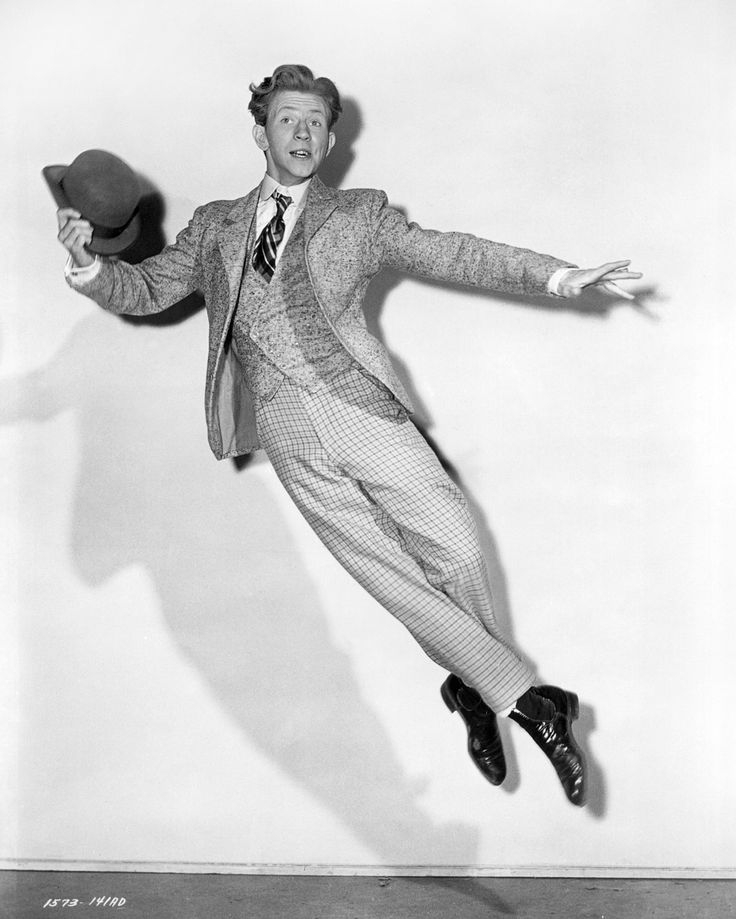 He understands that it's time for a change, and Phyllis agrees with him. Fred announces to the press that he is leaving.
He understands that it's time for a change, and Phyllis agrees with him. Fred announces to the press that he is leaving.
Letters of protest came in thousands a day - the public and the press could not believe that they would never see the star on stage again. However, he will soon return to the screens - to replace a colleague. At this time, before the filming of the film "Easter Parade", Gene Kelly broke his leg and Fred, at his request, replaced him.
In 1954, Phyllis, a chain smoker, dies of lung cancer (at age 46), which will be a huge blow to Fred. At that moment, he was involved in the filming of the film "Daddy Long Legs." In the devastation that fell on Fred, he wanted to leave the project, but the studio demanded that all the costs of filming the film be reimbursed from his pocket and he would go headlong into work, trying to drown out the pain of the loss. Then the films Funny Face, Silk Stockings, End of the World (with Ava Gardner and Gregory Peck) will appear.
In the 60s and 70s, he rarely acted in films - the aged Astaire preferred to play dramatic roles, sometimes outside the USA “Lilac Taxi” by I. Boisset, 1977; "Ghost Story" by J. Ervin, 1981.
Balanchine and Nureyev called him the greatest dancer of the 20th century. In addition, Fred Astaire is considered to be the dancer with the greatest influence on the musical genre, in film and television in particular. The American Film Institute named him the fifth greatest actor of all time.
It seems that the 20th century itself danced to the rhythms of its tap dance. The viewer went crazy with his "talking soles", and there was no woman who did not dream, at least once in her life, to dance with Fred Astaire. This is understandable, since no one could compare in dance sophistication with this "Mr. golden legs", the tap genius of the 20th century.
Once, when the artist was being introduced to Queen Elizabeth II of Great Britain, he reminded her that her mother had done him the honor of dancing with him, to which Her Majesty remarked: “You mean that she had the good fortune to dance with you!”
In an interview, already at the end of his career, Fred Astaire admitted: “I always wanted to dance in my own way, going beyond the existing rules.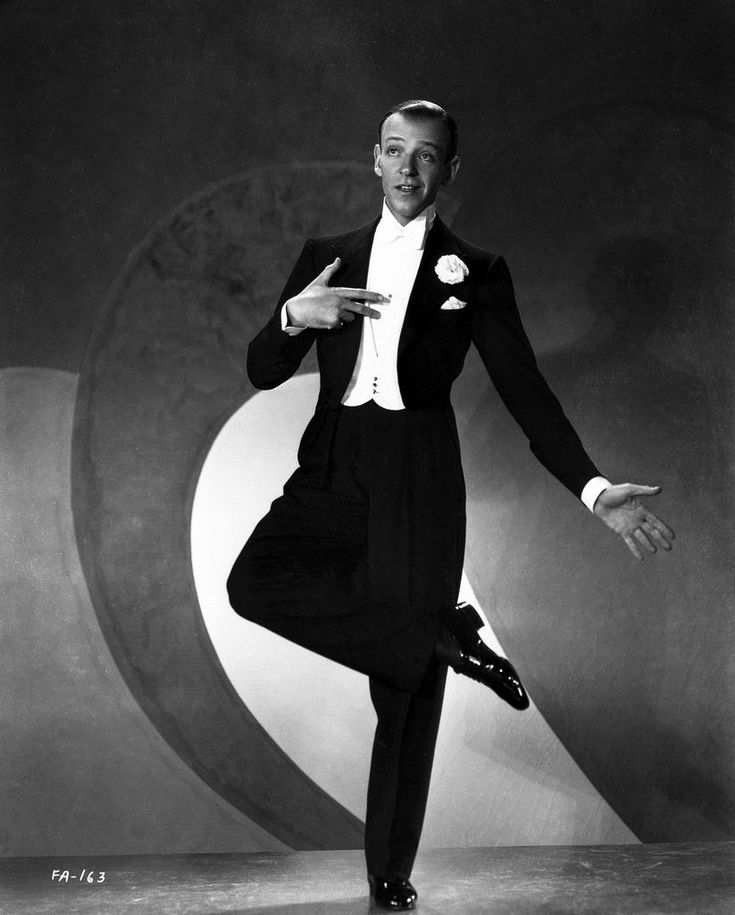 I could not stand it when they pointed out to me how to put my feet, or made some other remarks. I never danced for money and fame. I have always danced the way I liked. And he knew exactly as much about the history and philosophy of dance as he knew about the device of the TV, that is, nothing. Danced - and that's it!
I could not stand it when they pointed out to me how to put my feet, or made some other remarks. I never danced for money and fame. I have always danced the way I liked. And he knew exactly as much about the history and philosophy of dance as he knew about the device of the TV, that is, nothing. Danced - and that's it!
He was one of the founders and leading actors of musical and dance films, the film musical genre. For three decades (30-40-50 years of the XX century) he determined the image of this genre. Fred Astaire was not only a gentleman dancer and an aristocrat of tap dancing, not only a coryphaeus of rhythms, his dances taught and teach the whole world how to overcome gravity. In his memoirs Steps in Time, in his characteristic ironic manner, he outlined his philosophy of dance in the following way: “I am often asked to talk about the history and philosophy of dance. But this is a subject on which I have little to say. As a rule, people talk about my works using the terms of ballet art, but I'm not a ballet dancer.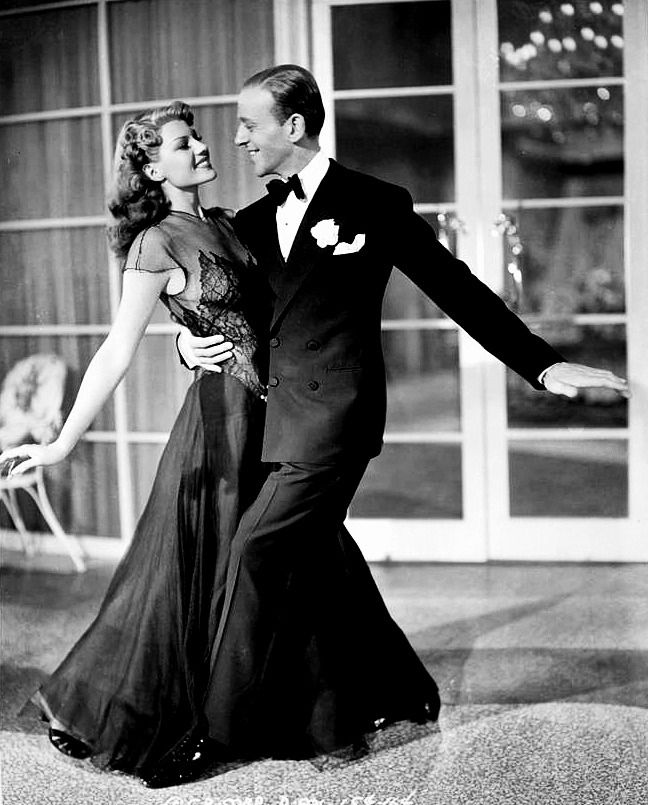 Ballet is the best education an artist can get, and as a child I did it too, but I almost never used it for myself. I have always wanted to give my dance a "free-flying bird" style, and I didn't want it to show the rigid rules of ballet art. From the very beginning, I felt that I was able to throw off these "shackles" because I knew for sure that I would never be able to devote myself to ballet. I felt that I was destined to become an interpreter of music, and no one else. And in this area there are no boundaries! I never had a desire to prove something to someone with my dances, which I never considered as a way of self-expression. I dance and that's all."
Ballet is the best education an artist can get, and as a child I did it too, but I almost never used it for myself. I have always wanted to give my dance a "free-flying bird" style, and I didn't want it to show the rigid rules of ballet art. From the very beginning, I felt that I was able to throw off these "shackles" because I knew for sure that I would never be able to devote myself to ballet. I felt that I was destined to become an interpreter of music, and no one else. And in this area there are no boundaries! I never had a desire to prove something to someone with my dances, which I never considered as a way of self-expression. I dance and that's all."
His theater and film career spanned 76 years.
At the age of 81, he marries again (to 36-year-old Robin Smith, the owner of a rare profession - she was one of the few female jockeys and will end her life in Los Angeles, where she will die of pneumonia at the age of 88 .. ).
The actor died on June 22, 1987.
From his first marriage he had three children - Peter Potter, adopted by him, Fred Astaire Jr.